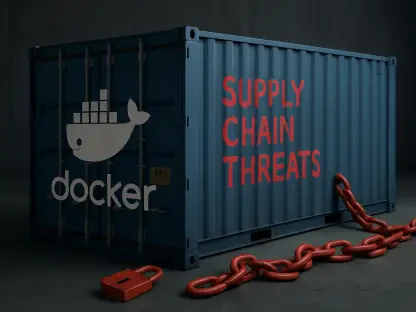As connectivity demands and data transmission needs escalate in the digital era, communication service providers (CSPs) are under immense pressure to optimize their networks. Transitioning to advanced cloud infrastructure has become imperative for fostering long-term growth and efficiency. Ericsson’s Cloud Native Infrastructure Solution (CNIS) emerges as a pivotal solution aimed at meeting the diverse needs of CSPs globally. This article delves into the various aspects of Ericsson’s CNIS and how it stands as a game-changer in modern network optimization and development.
Pioneering Cloud Infrastructure
Adaptability and Flexibility
Ericsson’s CNIS is designed to accommodate various deployment options spanning small, medium, and large telecom environments. Supporting cloud-native applications and virtual workloads, CNIS showcases its adaptability and flexibility in addressing the evolving requirements of CSPs. This versatility ensures that whether a provider is handling a minimal local network or a large-scale international operation, CNIS can be configured to deliver optimal performance and scalability. Its ability to support both virtual workloads and cloud-native applications enables CSPs to seamlessly transition their operations to more modern and efficient platforms, as the demands of the digital age continue to grow.
In the complex landscape of network demands and rapid technological change, flexibility is crucial. Ericsson’s approach provides CSPs with the tools required to not only meet today’s connectivity needs but also to anticipate and prepare for the future. This adaptability fosters an environment where innovation is not merely encouraged but made practical and achievable. The CNIS infrastructure has been engineered to evolve with service providers, allowing them to integrate emerging technologies without disruptive overhauls to existing systems. This longevity and foresight represent a significant advantage in the dynamic world of digital communication.
Collaborative Development
With a robust reference architecture developed through partnerships with key industry vendors, CNIS demonstrates Ericsson’s commitment to comprehensive and integrated solutions. The collaborative approach has led to the deployment of CNIS across over 400 data centers worldwide, integrating capabilities from allied vendors like Extreme Networks. This extensive network and the combined expertise of multiple leaders in technology create a robust, thoroughly tested infrastructure. By leveraging this collaborative effort, CSPs gain access to a well-rounded suite of solutions, ensuring that their networks operate seamlessly with components that have been optimized for compatibility and performance.
The breadth and depth of collaboration in developing CNIS underline Ericsson’s dedication to innovation and excellence. By partnering with top-tier vendors, Ericsson has harnessed the best technologies available, ensuring that CNIS remains at the forefront of cloud solutions. This cooperative model also means that updates and improvements can be rapidly integrated, maintaining a cutting-edge performance level that keeps CSPs ahead of their competitors. The initiative’s success is evident in its widespread adoption and the tangible improvements in network efficiency and reliability that many CSPs experience.
Efficiency and Cost Reduction
Bare Metal Solution
One of the notable benefits for CSPs adopting Ericsson’s CNIS is the highly efficient bare metal solution which significantly reduces total ownership costs by 15 to 20 percent. By removing virtualization overhead, the bare metal solution ensures enhanced speed and resource efficiency, contributing to a smoother network experience. This elimination of unnecessary layers means that applications can run more efficiently, using fewer resources and thus reducing operational costs. The immediate impact is a noticeable boost in performance, making networks quicker and more responsive to user needs. Such direct benefits are critical in an age where speed and efficiency are paramount.
This bare metal approach represents a clear departure from traditional virtualized infrastructures, signaling a shift towards more streamlined and effective network management. CSPs benefit not only from cost savings but also from the capacity to handle higher volumes of data traffic without the corresponding increase in latency. By prioritizing efficiency from the ground up, Ericsson ensures that networks can deliver higher-quality service, meeting the growing expectations of end-users. This aspect of CNIS is crucial for CSPs looking to differentiate themselves in a crowded marketplace.
Simplified Network Management
Key advantages of CNIS include simplified network management, reduced deployment times, and robust reliability. The dual mode 5G core solution within CNIS offers a full stack application and cloud infrastructure, significantly simplifying customer operations and management. This efficient management approach enhances network operations, particularly in scenarios involving potential service interruptions. Automation within CNIS ensures that even complex network tasks are performed smoothly and with minimal human intervention, drastically reducing the possibility of human error and enhancing overall reliability.
The streamlined nature of CNIS also translates to faster deployment times for new services. This advancement means that CSPs can bring new innovations to the market more rapidly, a critical competitive advantage. In practical terms, service providers can deploy and launch applications within four to eight months of order placement, a timeline significantly shorter than traditional methods. This rapid deployment capability allows CSPs to quickly adapt to evolving market demands and capitalize on new business opportunities. Simplified management and faster deployment ultimately contribute to a more agile and responsive network infrastructure.
Reliability and Performance
Automation and Orchestration
CNIS’s automation and orchestration capabilities provide end-to-end responsibility for issue resolution within the entire stack, ensuring faults can be addressed more swiftly than third-party clouds. This capability delivers cost savings of around 10 percent in cloud platform and infrastructure management. Automation also ensures that repetitive and routine tasks are handled efficiently, freeing up human resources to focus on more strategic initiatives. This kind of orchestration is invaluable in maintaining consistent network performance, particularly in environments where uptime and reliability are critical.
Incorporating advanced automation technologies, CNIS is poised to handle potential service interruptions with minimal disruption. The automated systems continuously monitor network health and performance, instantly responding to any anomalies by rerouting traffic or allocating additional resources as needed. This proactive management not only prevents potential downtimes but also allows networks to operate at peak efficiency, accommodating varying loads with ease. By addressing issues swiftly within the stack, CSPs ensure that their services remain reliable and high-performing, reinforcing their credibility and trust with users.
Streamlined Deployments
The solution facilitates reduced deployment times through pre-integrated solutions and streamlined processes, allowing CSPs to expedite market introduction of new services. This can translate into the deployment and launch of applications within four to eight months of order placement, effectively launching new deployments up to three times faster than traditional methods. Streamlined deployment processes mean that CSPs can respond more dynamically to market trends and demands, positioning themselves as agile and forward-thinking players in the industry. This agility provides a significant competitive edge in an environment where responsiveness to market conditions can determine success.
Moreover, the pre-integrated nature of CNIS ensures that the entire deployment process is as frictionless as possible. By reducing the need for extensive custom configurations, CSPs can roll out new services quickly and efficiently, minimizing the time from concept to execution. This rapid deployment capability is particularly advantageous in fast-paced technology sectors where speed to market can make a substantial difference. Overall, streamlined deployments underscore Ericsson’s commitment to providing CSPs with practical and effective solutions that enhance both performance and service delivery.
Enhanced Resilience and Agility
Data Center Fabric Automation
The integration of Extreme’s data center fabric automation exemplifies the value added by combining components from partners. These automations improve network resilience by automating routine tasks and optimizing data flows, which boost network reliability and uptime. The automation of these processes reduces the risk of human error and ensures that essential network operations are carried out consistently and accurately. This reliability is paramount for CSPs striving to provide uninterrupted and high-quality services to their customers, reinforcing trust and satisfaction.
Beyond routine task automation, Extreme’s data center fabric automation significantly enhances data flow optimization. Efficient data flow management ensures that information moves seamlessly across the network, avoiding bottlenecks and ensuring stable connectivity. This improvement maximizes the overall performance and availability of services, making certain that end-users experience minimal disruption. By leveraging sophisticated data center fabric automation, CNIS enhances the intrinsic resilience of CSP networks, allowing them to meet and exceed user expectations consistently.
Dynamic Resource Allocation
Dynamic resource allocation facilitated by automations ensures that network resources are adjusted in real-time to maintain optimal performance during peak usage. The synergy between CNIS and Extreme’s automations alleviates the burden of complex manual configurations, enabling CSPs to deliver consistent, high-quality services. Real-time resource allocation allows networks to adapt to varying loads, ensuring that performance does not suffer during high-demand periods. This adaptive capability is essential for maintaining service quality and user satisfaction, especially in an era where digital consumption can spike unpredictably.
The dynamic allocation of resources not only supports performance but also ensures cost-efficiency by using resources only as needed. This model allows CSPs to operate leaner, investing only in the necessary capacities while still delivering comprehensive service quality. This balance of performance and efficiency is a significant selling point for modern network solutions. By combining CNIS with Extreme’s automated resource management, CSPs can achieve a harmonious balance of robust service delivery and operational cost management.
Future Prospects
Evolution of 5G and Beyond
Looking to the future, CNIS is expected to play a critical role in the evolution of 5G and beyond. As CSPs strive to meet capacity growth objectives, support innovative service and business models, and monetize their networks, the demand for cloud-native solutions like Ericsson CNIS will likely increase. With the ongoing expansion of 5G networks and the development of associated technologies, CNIS offers the scalability, efficiency, and adaptability that CSPs need to stay competitive. This forward-thinking infrastructure is engineered to support emerging trends and technological advancements, making it a prudent investment for future network developments.
Ericsson’s CNIS is strategically positioned to assist CSPs in harnessing the full potential of 5G by providing the necessary frameworks and tools for innovative service delivery. As network requirements grow and evolve, CNIS ensures that CSPs are not only meeting current demands but are also prepared for future developments. This preparedness is vital in maintaining a position at the cutting edge of technology and market trends. By enabling CSPs to deploy and manage advanced network infrastructures effectively, CNIS contributes significantly to the broader goals of digital transformation.
Agile and Intelligent Network Models
In the burgeoning digital era, the requirements for connectivity and data transmission are rapidly escalating, placing significant pressure on communication service providers (CSPs) to enhance their networks. Embracing advanced cloud infrastructure is now crucial for achieving sustained growth and operational efficiency. Ericsson’s Cloud Native Infrastructure Solution (CNIS) arises as a vital tool designed to address the varied needs of CSPs globally. This powerful solution not only facilitates the optimization of modern networks but also supports their continuous development. This article explores the multifaceted elements of Ericsson’s CNIS and its transformative impact on contemporary network optimization. By leveraging CNIS, CSPs can ensure agile and scalable networks, meeting the demands of the current digital landscape. Ericsson’s commitment to innovation sets a new standard in delivering reliable, efficient, and future-proof network solutions, proving to be a monumental advancement in the tech-driven era.









